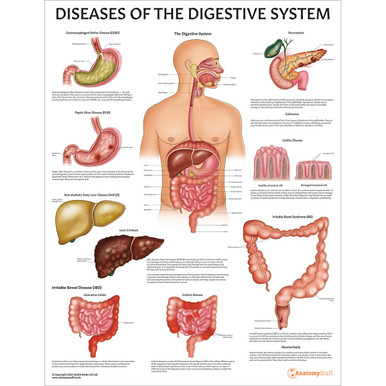Written by: Liz Paton, MSc
Stomach Anatomy Overview
The stomach is a muscular, hollow, digestive organ where the early stages of digestion begin. It is responsible for storing and digesting the food we eat and releasing nutrients into the small intestine.
Stomach Anatomy
It is located in the abdominal cavity on the left of the upper abdomen. The stomach wall has four tissue layers. In order from superficial to deep these are: the mucosa, submucosa, muscularis externa and serosa. The mucosa and submucosa are formed into ridges called rugae, which contract to aid with digestion.
It can be divided into four main sections: the cardia, fundus, body and pylorus. Food travels from the oesophagus into the stomach through the cardia, which is found at the superior opening of the stomach. The fundus, the superior most region of the stomach found to the left of the cardia, stores the gas that is produced during digestion. The body is the largest part of the stomach, found underneath the fundus in the central area of the stomach. The pylorus is the region where the stomach meets the duodenum (the first part of the small intestine). The wide area of the pylorus, just below the body, is called the antrum.
The greater curvature forms the large lateral border to the left of the stomach. The lesser curvature forms the smaller medial border to the right of the stomach.
Stomach and Digestion
Once your food has been masticated (chewed), bolus is transported into the stomach through the oesophagus. The stomach contains acid which helps with chemical digestion and moves the food forwards and backwards which is a form of mechanical digestion. The bolus is then broken down into chyme, a semi-fluid substance of partially digested food, which then travels through the pyloric valve into the small intestine.
Free Download PDFs
View AllRelated Products
View All














